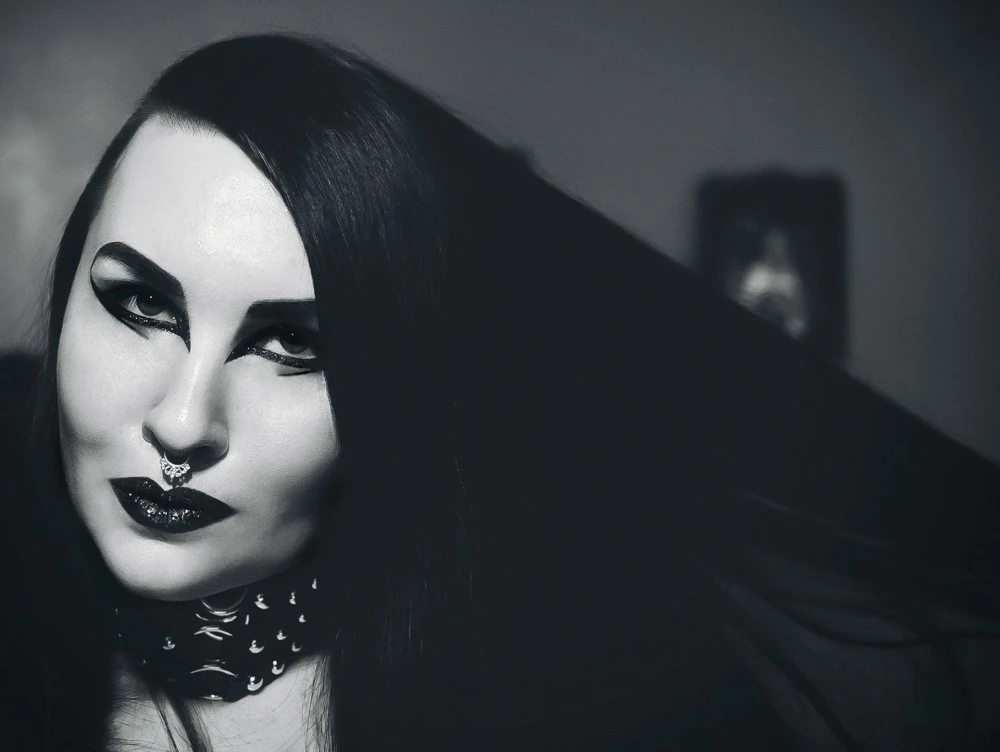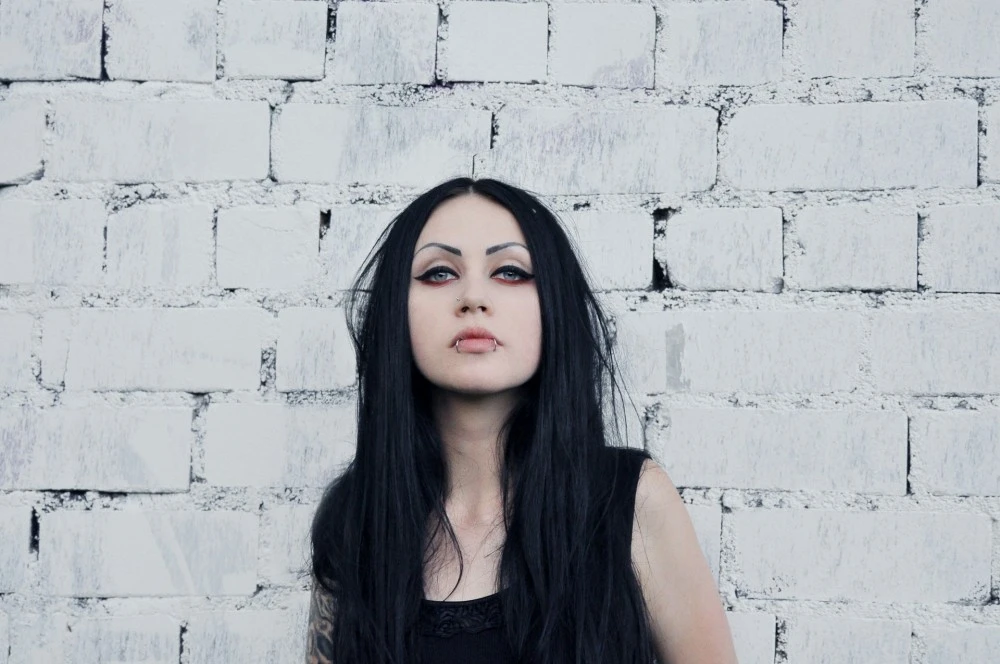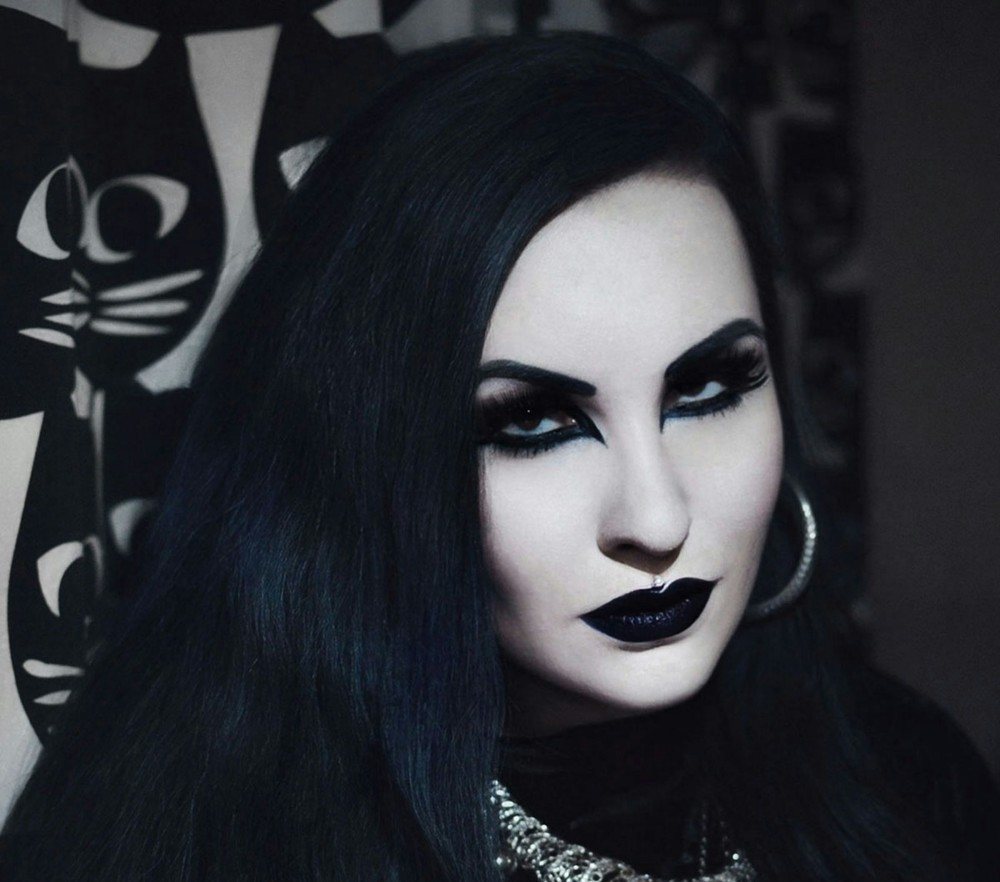November 18, 2024
Do Female Vampires Menstruate?
“Of course not, you idiot”, I hear the pedant telling me, “female vampires don’t menstruate because vampires don’t exist”. Well, not so fast. Remember my post on whether narrative worlds are real. Yes, vampires are fictional. But reality is another point altogether.
Nonetheless, let’s not get caught in semantics. Most of us agree that vampires aren’t “real” in the sense that we might bump into one in the supermarket – buying tampons?
And yet, as a Gothic scholar and overall someone interested in vampires, the question has intrigued me: Would female vampires menstruate? What would it mean in terms of their ontology? After all, blood is directly connected with a vampire’s existence. The absence of any reference in literature and art in general is deafening. So, since there are no answers that I have found, I decided to write this post and give them myself.

The Current “Position” on whether Female Vampires Can Menstruate
The quotation marks are in place because this position is not canonical. Indeed, the concept of a canon here does not quite apply for two reasons:
- There is no established vampire physiology in canonical Gothic texts. Some literary vampires dislike crosses, others don’t. Some can be killed by sunlight, others not. Modern narratives – and modern narrative forms, such as video games – further destabilize any canonical physiology.
- Consequently, any modern analysis – and because there are virtually no menstruating vampires in any remotely canonical literature, such analysis is popular, not academic – features a series of logical leaps leading from one premise to the next.
In more detail, most depictions of vampires suggest that they exist in a form of biological stasis: They lack a heartbeat, cellular regeneration, and typically do not engage in bodily processes like digestion. They are undead.
Because menstruation depends on bodily processes that require a biologically active body, like hormonal changes and the shedding of the uterine lining, the assumption would seem to be that female vampires cannot menstruate.
How does then vampire literature explain other such biological processes – say, moving one’s muscles, growing fangs, or producing offspring? It generally… doesn’t.
The Supernatural “Explanation”
As I mentioned above, fiction and art in general remain silent on the topic of female vampires menstruating, and they do the same with associated processes like producing offspring. For creatures as highly sexual as vampires, this is problematic. One explanation could be a reluctance to deal with bodily functions of that scope – apparently killing is alright… – especially in a popular-fiction context.
Overall, concepts related to reproduction and bodily functions are either ignored entirely or they are given supernatural explanations, especially when it comes to female vampires. Without explaining the (uncomfortable) details, vampires have babies and that’s that. Think of entertainment-level depictions like the film Van Helsing, where Dracula and his brides produce countless little cocoons with offspring. How?
I don’t like this.
To me, supernatural escapes are a cop-out. Not only are they incompatible with the Gothic (for reasons you can read about in, for instance, my post on the differences between fantasy and Gothic), they are also narratively problematic. It’s basically the deus-ex-machina, surprising-and-avoidable type of escape from narrative dead-ends.

The Ability of Female Vampires to Menstruate Depends on Ontological Assumptions
I’d much rather be speculative but anchored in, if not hard reality, at least consistent reality. In other words, I’d like to explore a couple of possibilities regarding female vampires and menstruation, and to do that I will be speculative but focusing on logical consistency, drawing from biological principles as well as literary conventions.
My key concept here is in-betweenness, which is a characteristically Gothic concept – the academically inclined might also find tangents with Hegelianism.
In-betweenness here refers to states that don’t belong to what would seem to be a neatly divided pair of opposites. I mean, the very existence of vampires is an apt example, as the dialectical pair life-death must be one of the strongest, most neat such divisions in our “real” life. An undead creature most certainly alludes to other such states. As a result, there is no reason we cannot imagine a different set of assumptions for the associated a-biology.
I can think of two possibilities here:
- Female vampires menstruate productively – as a result of partial, in-between biological functionality. That is, a female vampire’s body still retains partially human characteristics and can reproduce in a similar fashion.
- Female vampires menstruate non-productively. Here we have an example of evolutionary hybridity: The human female body has become a vampire female body, and what used to be a process of creating new life has adapted to other functions.
Let’s see both options in more detail.
Productive Vampiric Menstruation: Irregularity
I see no reason why we can’t assume a vampire could have a partially functional reproductive physiology. After all, vampires have bodies that move, assumingly with muscles, and there must be some sort of energy transfer system. It’s plausible that some biological cycles could still operate, albeit irregularly.
In this framework, female vampires could menstruate, perhaps not monthly as a human would, but sporadically, maybe as a result of environmental factors (say, feeding) or psychological states (like heightened emotions) – there are all sorts of literary opportunities here, having to do with distorted temporality.
This would allow for a residual biological rhythm within the “undead” framework, while acknowledging the vampire’s altered state.
Non-reproductive Vampiric Menstruation: Hybridity
If we wanted to reject the idea of a productive – albeit irregular – menstrual cycle, a vampire could still have a sort of hybrid physiology, retaining a partially human biological system. After all, a vampire’s body originates from a human one.
Just as human teeth adapt to serve a different purpose in a vampire body, a vampire’s reproductive organs may do the same. For example, one speculation could be regulating blood toxicity or purging the body of impurities – the character of Marlowe in Only Lovers Left Alive could sure have (minor spoiler) used such a thing!
In this scenario, the vampire’s menstrual cycle would resemble menstruation in appearance but operate with a distinctly non-reproductive function, as the periodic renewal of blood-carrying tissues would ensure that a female vampire’s body operates efficiently.

Literary Repercussions of Having Female Vampires who Menstruate
Speculation is good and nice, but in order to be useful it must also allow us to think of the repercussions. In our case, how would female vampires who menstruate alter our interpretations of Gothic narratives?
In simpler terms, how is a vampire on her periods different?
Blood as a Replenishable Resource
In typical vampire lore, feeding on blood is both a necessity and a defining feature of the undead. For a menstruating vampire, this need for blood could serve a dual purpose. A menstruating female vampire would require a way to replace any blood lost with each cycle, setting up a fascinating, self-sustaining loop: The vampire feeds not only to satisfy hunger but also to sustain a pseudo-biological cycle.
This scenario raises an interesting narrative twist. The female vampire’s feeding habits could be driven not only by pure hunger but also by the need to maintain a functioning system, echoing menstruation. Such a feedback loop would sustain her cycle in a way that resembles human physiology, while emphasizing her dependence on blood in a uniquely vampiric manner.
In other words, menstruation in a vampiric context would introduce a split between male and female vampires that isn’t quite there at present. A female vampire would have needs (and motivations) that differ from those of male vampires.
Considering the possible reproductive function involved, we have many intriguing – and even disturbing – feminist readings available, having to do with sexual freedom, self-definition, and identity. You don’t need me to tell you how ever-relevant this is.
The Psychological Dimension: A Vestigial Reminder
Beyond a purely physiological speculation, menstruation could also be explored as a psychological echo of the vampire’s former life. In some narratives, this could act as a bridge back to humanity, a vestigial function that serves as a reminder of the vampire’s previous mortality.
Again, the split here between male and female vampires would be intriguing, as it would highlight a connection to humanity (and empathy?) in female vampires that wouldn’t exist in male ones.
A recurring menstrual cycle in a vampire, either productive or non-productive, could still act as a kind of haunting reminder, manifesting occasionally to evoke memories or emotions tied to her mortal life.
In this scenario, menstruation would become a symbolic anomaly linking the vampire to her lost humanity in a tangible, eerie way.
Whether Female Vampires Menstruate or not Is a Question of Humanity
It’s clearly impossible to offer any definitive answer regarding plausibility, since the entire topic is highly speculative and fictional. However, I’d argue that the solutions I explored are at least self-consistent within vampiric physiology.
From a purely narrative perspective, having female vampires who menstruate is a literary element that can offer fresh perspectives for exploring the general themes of life, death, and identity, but – more intriguingly – also of feminist topics, something the Gothic has had a long, long tradition in.
Ultimately, a female vampire on her periods (hell, arguably needing tampons or cups) might sound like a ludicrous idea, something barely worthy of discussion, let alone analysis. However, vampiric menstruation is a topic that – in a truly Gothic fashion – is far deeper and more serious than what might initially appear, as it would introduce a significant split between male and female vampires – including, crucially, power dynamics.
By understanding the literary repercussions such a split would generate, we can perhaps better understand some of the realities of our “real” world, too. Isn’t that one of the chief characteristics of art?
I don't show you ads or newsletter pop-ups; everything is offered for free. Wanna help support a human internet?
